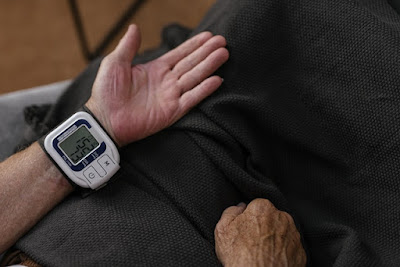 |
| How to use a digital sphygmomanometer |
It is important to know how to use a digital sphygmomanometer correctly, especially for people with high blood pressure or low blood pressure. That way, the results obtained can be accurate and the handling steps can be carried out appropriately. Digital sphygmomanometer is a blood pressure measuring device that is practical and easy to use at home. This type of sphygmomanometer is equipped with a cuff that is attached to the arm and can be inflated automatically.
Later, the results of the blood pressure measurement will appear on a small screen or monitor so that it is easier to read. Some types of digital sphygmomanometer can even be connected to an application on the cellphone which is also capable of storing a history of blood pressure measurements.
Unfortunately, the accuracy of a digital sphygmomanometer in reading blood pressure can be affected by improper cuff fitting or body movements. Therefore, you need to know the correct use of a digital sphygmomanometer to get accurate results.
Preparation Before Using a Digital Tensimeter
There are several things to consider before using a digital sphygmomanometer, namely:
- Ask a doctor or health worker to check the accuracy of the digital sphygmomanometer used at home.
- Avoid measuring blood pressure immediately after eating, exercising, smoking, or consuming caffeinated beverages such as coffee.
- Wear loose-fitting clothing so that the cuff is easy to attach and is in direct contact with the skin.
- Calm down and make sure you are relaxed. If you are anxious or uncomfortable, this can have an effect on your blood pressure.
- Sit in a comfortable, quiet place with your feet flat on the floor. Make sure you don't cross your legs.
- Position yourself so that your arms rest on a flat surface and are at the same level as your heart.
How to Use a Digital Tenimeter
Here are some ways to use the right digital sphygmomanometer:
- Place your left or right arm on a flat surface.
- Hold your palms up, then insert them into the cuff.
- Place the cuff about 2 cm above the elbow crease and make sure the end of the cuff tube is at the top and center of the arm.
- Tighten the cuff so that you can fit only two fingertips over the edge of the cuff.
- Press the start button and start the measurement.
- Try to stay relaxed as the cuff begins to expand and compress the arm.
- Avoid moving too much and staying still during the blood pressure measurement process, because moving, chewing, talking, or laughing can affect the digital sphygmomanometer reading.
- Wait for the cuff to deflate and the measurement results to appear on the monitor.
- Pay attention to the numbers that come out on the monitor, then separate the numbers that show the value of blood pressure and pulse.
- Record the results of blood pressure measurements on the monitor screen.
If the monitor does not show the measurement results, make sure that the position and condition of the cuff on the arm is correct, because it could be that the cuff hose is pinched or the cuff is too loose. Rest about 1-2 minutes before taking the measurement again.
You can also apply the following tips in using a digital sphygmomanometer:
- Measure the blood pressure in both arms when you first start the measurement. After that, use the arm that gives a higher yield.
- Always use the same arm. If possible, use the arm that the doctor or nurse uses when taking your blood pressure.
- Take blood pressure at the same time every day. The recommended time is the morning before breakfast or before exercise.
- Avoid measuring blood pressure right after waking up.
- Do not round the size up or down.
- Do not worry too much, if there is a small change in blood pressure, because it is normal.
Please note that normal blood pressure ranges from 90/60 mmHg to 120/80 mmHg. Values 90 and 120 indicate the systolic pressure that pumps blood from the heart to the rest of the body, while 60 and 80 refer to the diastolic pressure when the heart muscle relaxes.
Blood pressure is considered high when it is at 130/80 mmHg or more, while blood pressure can be said to be low when the number is below 90/60 mmHg. There is no need to worry if the blood pressure reading is slightly higher or lower than usual. You can re-measure your blood pressure 2-3 times to get an average result.
How often to measure blood pressure depends on your health condition. So, you can ask directly to the doctor who treats you. Usually, when new hypertension treatment is started or changed, you are advised to measure blood pressure in the morning and evening for several days.
If you are still confused about how to use a digital sphygmomanometer or how to read the results on the screen, don't hesitate to ask your doctor.
Related Search:
- digital sphygmomanometer,
- lumiscope digitronic digital sphygmomanometer,
- best digital sphygmomanometer,
- oem digital sphygmomanometer quotes,
- what is a digital sphygmomanometer,
- china best digital sphygmomanometer wholesale,
- digital sphygmomanometer online,
- best digital sphygmomanometer supplier,
- welch allyn digital sphygmomanometer,
- digital sphygmomanometer supplier,
- digital sphygmomanometer blood pressure monitor supplier,


